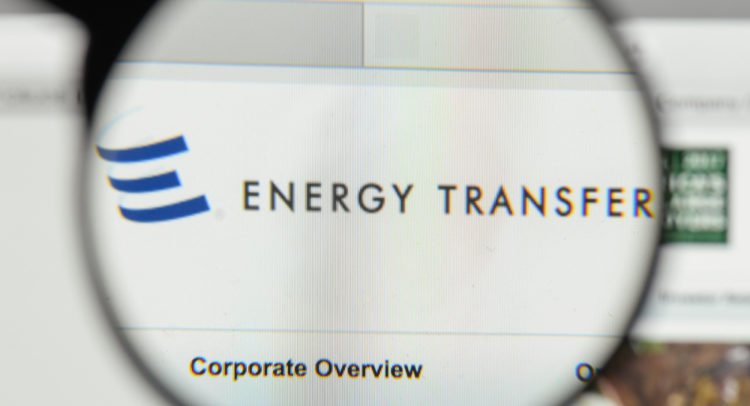Energy Transfer provides energy-related services, and is headquartered in Dallas, Texas. The company owns approximately 90,000 miles of pipelines and associated infrastructure in 38 states and Canada.
Elevate Your Investing Strategy:
- Take advantage of TipRanks Premium at 55% off! Unlock powerful investing tools, advanced data, and expert analyst insights to help you invest with confidence.
I am bullish on Energy Transfer (ET). Despite the risks described below, the company’s cash flow and net assets show lots of upside potential. (See Analysts’ Top Stocks on TipRanks)
Investment Thesis
ET’s discounted cash flow analysis shows lots of upside potential despite short-term risks surrounding regulation and business risk.
While its net debt is higher than the industry average, Energy Transfer’s dividend is a very healthy 7.4% with only a 33.8% payout ratio. The company has an overall trend of maintaining cash flow, and revenues are forecasted to remain relatively constant over the next three years.
Future Outlook
Energy Transfer once entered a 50/50 venture with Royal Dutch Shell (RDS.A) in the Lake Charles LNG project, which should yield 16.45 million tons per annum (mtpa) of natural gas exports to Asia and Europe once completed.
Shell announced it would no longer participate in the joint venture at Lake Charles in 2020, leaving Energy Transfer as the sole owner and raising its risk profile. The increase in regional gas prices helps ET’s value proposition on the LNG project, which is anticipated to begin exports by 2025.
ET acquired another midstream provider, SemgGroup, for $5.1 billion in late 2019. It is reasonable to suggest ET is interested in increasing its U.S. export access and SemGroup’s position in the Houston Ship Channel is a very valuable asset.
With Energy Transfer looking to gain more U.S. export market share, investors should expect to see this position as a hedge against regional market price volatility.
Company Financials
Energy Transfer’s P/E ratio is attractive at 4.6x, and ET’s dividend yield makes up for its slow growth.
Overall, the company’s free cash flow has remained relatively constant and is currently around $8.18 billion, which is elevated compared to previous years. Given the current forecasting, earnings and cash flow will likely see a short decline in the near term before returning to normal at around $6.31 billion.
While P/B may not demonstrate value within a company, the current P/B ratio is about 0.8x, compared to the industry average at 1.9x giving.
Book value combined with the low P/E multiple demonstrates the company has likely not returned to fair value after the sell-off in March 2020.
Valuation
Taking into consideration the recent increase in cash flow and the likelihood cash flows will decline to previous levels, the calculation below will use $6.31 billion as opposed to the current free cash flows of $8.18 billion.
The company’s anticipated free cash flow growth rate is 3.6%. When calculating the weighted average cost of capital investors will find it to be around 6.9%, but due to the higher debt ratio and other potential risks, the calculation below uses an investor hurdle rate of 13.6% for discounting purposes.
For valuation purposes, the model includes free cash flow at $6.31 billion and growing at a modest rate of 3.6% annually. Using a discount rate of 13.6% annually, its present value of future cash flows is $39.54 billion. This valuation constitutes a stock price of $14.61 which is a 74.6% increase from the current price.
Risks
One of the largest risks to Energy Transfer is the Dakota Access Pipeline. In May, a District Court Judge ruled that the pipeline could continue operations while the U.S. Army Corps of Engineers conducts its environmental impact statement.
The company needs this to receive a federal permit to run the pipeline underneath Lake Oahe in South Dakota. If the Army recommends not granting a federal permit, ET could see significant declines in revenue as the Dakota pipeline likely accounts for one-fifth of its capacity.
Wall Street’s Take
Turning to Wall Street, Energy Transfer has a Strong Buy consensus rating, based on five Buys assigned in the last three months. At $14.20, the average Energy Transfer price target implies 69.8% upside potential.

Final Thoughts
An investment in Energy Transfer is not without its risks, but with its low multiples and overall low valuation when discounting future cash flows, the company is a great value.
Disclosure: At the time of publication, Aaron Stine did not have a position in any of the securities mentioned in this article.
Disclaimer: The information contained in this article represents the views and opinion of the writer only, and not the views or opinion of TipRanks or its affiliates Read full disclaimer >
















